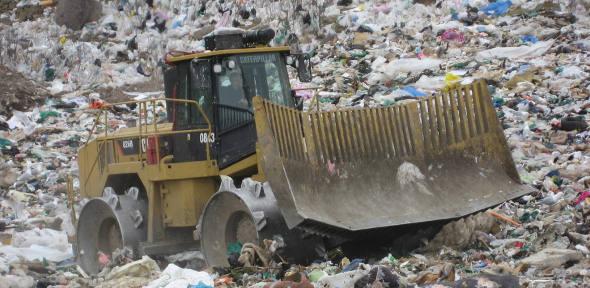
The Environment Agency has estimated that 300,000 hectares of land at over 325,000 sites in England and Wales are contaminated with a variety of pollutants. On average 250 new sites have been classified as contaminated each year since 2000.
Using landfill alone is no longer a sustainable option. But the remediation and re-use of contaminated and brownfield sites allows this land to be used for essential housing, commercial or environmental development whilst also helping to protect valuable greenfield sites.
Cambridge University has recently launched the largest Technology Strategy Board funded project on Contaminated Land Remediation Technologies. Project SMiRT (Soil Mix Remediation Technology) is a £1.24M project led by the contractor Bachy Soletanche. Cambridge is the only academic institution involved and is a major partner in this project. The project also includes three engineering consultancies (Arcadis Geraghty & Miller, Arup and Merebrook Science & Environment), three trade associations (British Urban Regeneration Association, British Cement Association and UK Quality Ash Association) and four materials Suppliers (Amcol Minerals Europe, Richard Baker Harrison, Kentish Minerals and Civil & Marine Holdings).
Project SMiRT aims to achieve significant technical advancement and cost-savings by developing an innovative single Soil Mix Technology (SMT) system for integrated remediation and ground improvement, with simultaneous delivery of wet and dry additives, and with advanced quality assurance system.
Soil Mix Technology involves the use of a range of different mixing tools and additives to construct permeable reactive in-ground barriers, low-permeability containment walls, "hot-spot" soil treatment by stabilisation/solidification and for the improvement of soft soils. A range of the soil mix technology equipment developed by Bachy Soletanche and the resulting treated ground are shown in the figures. The project involves extensive laboratory treatability studies in which a wide range of conventional and novel binders and additives will be tested together with a range of soils and contaminants. In parallel the novel equipment will be designed and manufactured. Extensive field trials will then follow, scheduled for the first half of 2009. Extensive in-situ testing, sampling and groundwater monitoring will then be carried out together with extensive laboratory testing of the site samples and assessment of the field measurements.
As a major step towards increased understanding and uptake of SMT in the UK, the project will also involve consultation meetings with a wide range of stakeholders and a major dissemination programme through the organisation CL:AIRE (Contaminated Land: Applications in Real Environments).

